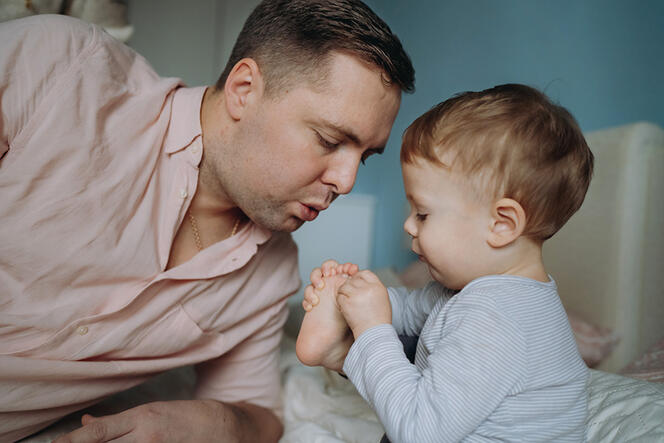You are here
The truth behind the placebo effect

The placebo effect is a real phenomenon that illustrates the power of the brain over the body. Based on the simple belief that it will relieve symptoms, a medicine that contains no active substance, called a placebo (for example, sugar capsules or a saline solution) may nevertheless prove effective in 30% to 60% of people! A bit like a mother’s kiss alleviates a child’s pain after a fall, or the prospect of a cure may improve a patient’s general state of health.
Medicines, and massages or surgery, etc., have been studied for decades; the placebo effect can be seen with many different types of treatment. It has thus shown its efficacy against a variety of symptoms: pain, insomnia, depression, anxiety, headaches, back ache… the list goes on. The problem is that its widespread use is limited by ethical guidelines, because it involves deceiving the patient into believing that they are receiving a real medicine. But this situation may change, and partly thanks to results obtained by scientists in the Techniques for Evaluation and Modeling of Health Actions (ThEMAS) team at the TIMC laboratory,1 near Grenoble (southeastern France).
An “honest” placebo also works...
“Conducted in the context of Léo Druart’s doctoral thesis (currently being published), our studies have shown that the placebo effect loses none of its efficacy if, instead of a standard “dishonest” inactive drug, you use an “honest”, or “open” version whose true nature is revealed to the patient, and – most importantly – provided certain precautions are taken beforehand,” explains the CNRS physiotherapist and rehabilitation expert Nicolas Pinsault, leader of the ThEMAS team.
In fact, scientists have known that a placebo can prove effective once the patient has been informed of the deception ever since the studies published in 2010 by Ted Kaptchuk’s team at Harvard Medical School in the US.2 In 80 patients suffering from irritable bowel syndrome – a digestive tract disorder that causes abdominal pain, constipation or diarrhoea – the scientists tested the efficacy of an open placebo versus the absence of any treatment. The team noted a “significant” reduction in pain among 59% of the subjects receiving the open placebo. This led to a conceptual revolution and put an end to the idea that the placebo effect necessitates “intentional ignorance”.
...but not quite so well
However, subsequent research work determined the efficacy of a deceptive placebo versus that of an open one and showed that the latter was less effective. During a study in 160 volunteers,3 Cosima Locher and colleagues at the University of Basel in Switzerland compared the ability of a deceptive placebo (a cream presented as a “real” painkiller) with that of an open equivalent (the same product but this time presented as a placebo) to reduce the perception of a painful stimulation. Ultimately it appeared that the open placebo was 7% less effective than the standard version.
It was this observation that gave Pinsault and his colleagues, Léo Druart and SaraEve Graham-Longsworth, the idea for their study. “Our hypothesis was that it might be possible to restore some of the efficacy lost when revealing that a treatment is a placebo, by telling the patient about the neurophysiological mechanisms that underlie the placebo effect before administering the drug,” explains the scientist.

It should be pointed out that these mechanisms are now well established. Several studies performed in recent decades have demonstrated that the patient’s conviction that the placebo will improve their state may trigger various cerebral and physiological changes that are indeed likely to relieve their symptoms: a stimulation of immunity, changes to blood pressure or variations in the secretion of certain biological molecules such as cortisol (stress hormone), endorphins and enkephalins (neuromodulators produced naturally by our brains).
The “educated” placebo – an ideal solution
“Our idea was that patients’ awareness and understanding of these mechanisms could help them to better integrate the fact that, despite the absence of an active substance, a placebo could exert therapeutic activity. And that by doing this, it would enhance the response to an open placebo, bringing it closer to that seen with a deceptive equivalent,” Nicolas Pinsault adds. Hence the idea to test this hypothesis by assessing the efficacy of a deceptive placebo versus that of an open, “educated” one administered after the participants had been given these explanations. “To our knowledge, ours is the first study to have tested the “non-inferiority” of the efficacy of an educated placebo versus that of a deceptive version,” he emphasises.
In practice, this work – the methodology of which is described in an article published in 20204 – involved 60 healthy individuals who were subjected to an acutely painful stimulation (keeping one hand in water at 0°C for an average of 1 to 1.5 minutes). Half of the participants received a conventional (deceptive) placebo and the other half an “educated” placebo. In both cases, the placebo consisted in a neutral cream containing no active substance. However, in the “standard” group, this product was presented as a “real” analgesic while in the “educated” group it was described as a placebo cream free of any active substances.
A tool for medical democracy?
All the participants started by watching a video: for the “educated” placebo group, a film explained the mechanisms underlying the placebo effect, while the second group viewed a “control” video on how to wash your hands. All subjects then underwent the painful stimulation, followed by an application of the test product before they self-assessed the severity of the pain they had experienced. The scientists then recorded the mean difference in pain intensity reported by the two groups, which was 0.7 mm on a scale of 0 to 100 mm! In other words, the degree of efficacy was equivalent.
“Our results have restored the possibility of administering a placebo under ethical conditions,” Pinsault enthuses. “They could contribute to greater medical democracy, considering that an increasing number of patients want to understand how the treatments they are offered actually work, so that they can participate in the decisions regarding their health.” Indeed, since the 1990s, the traditional paternalistic model of healthcare, where the carer alone decides on the treatments to be prescribed, is losing ground to the benefit of a different concept called “shared medical decision-making”. According to the French national health authority (HAS), this new model implies “exchanges of information and discussions in order to take joint decisions concerning the individual health of a patient”. As Pinsault puts it: “Because this involves explaining to a patient what the placebo effect is and how it works, the educated placebo fully meets these new expectations”.
It nevertheless remains necessary to verify these initial results in individuals affected by real diseases and not just in those suffering from artificial pain. The scientists in Grenoble are hoping to start investigating the issue in about a year’s time.
- 1. CNRS / Université Grenoble-Alpes.
- 2. Ted J Kaptchuk et al., PLoS One, 22 December 2010. doi: 10.1371/journal.pone.0015591(link is external).
- 3. Cosima Locher et al., Pain, December 2017. doi: 10.1097/j.pain.0000000000001012(link is external).
- 4. Léo Druart et al., Medicines (Basel), 2 January 2020. doi: 10.3390/medicines7010003(link is external).
Explore more
Author
A graduate from the School of Journalism in Lille, Martin Koppe has worked for a number of publications including Dossiers d’archéologie, Science et Vie Junior and La Recherche, as well the website Maxisciences.com. He also holds degrees in art history, archaeometry, and epistemology.














